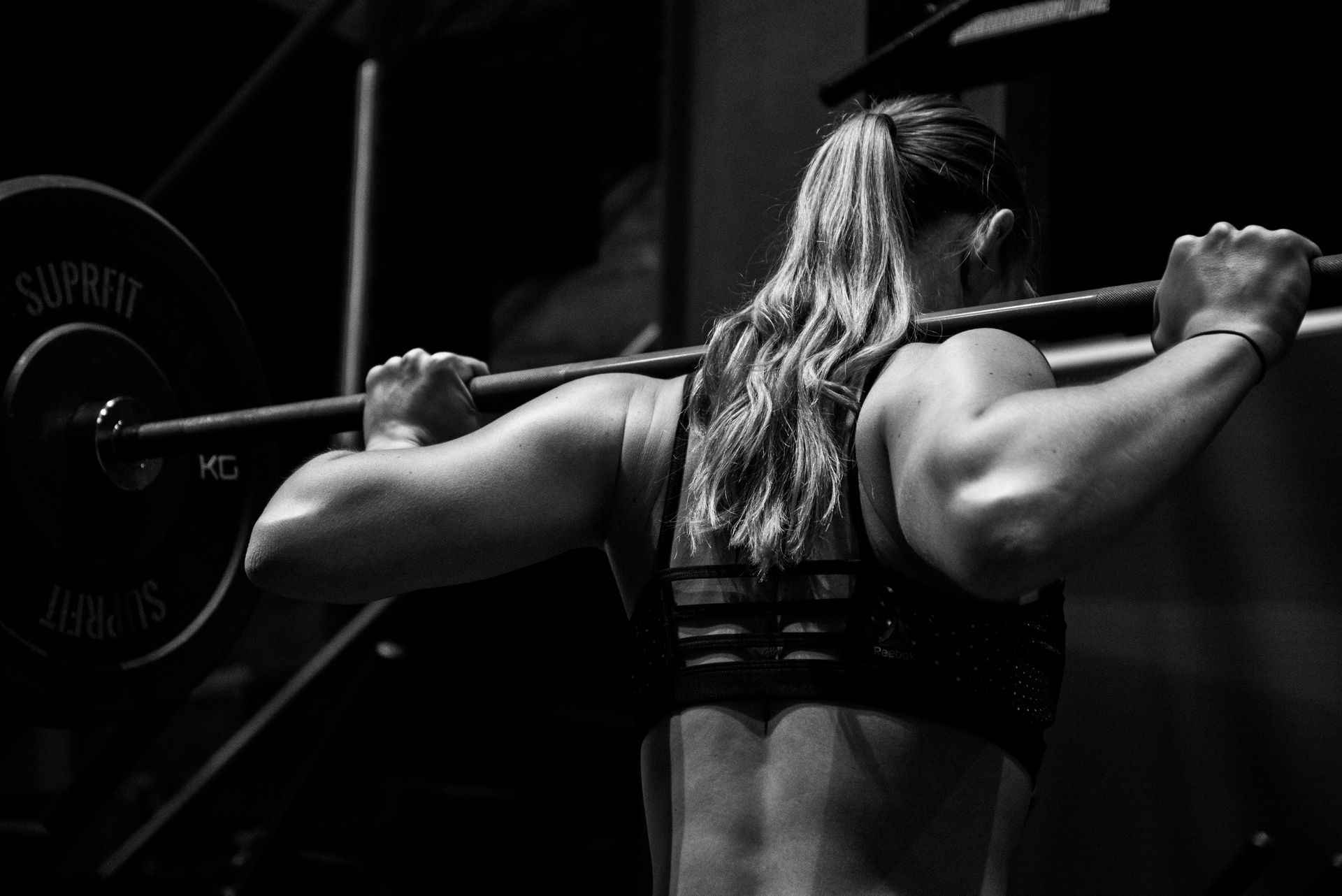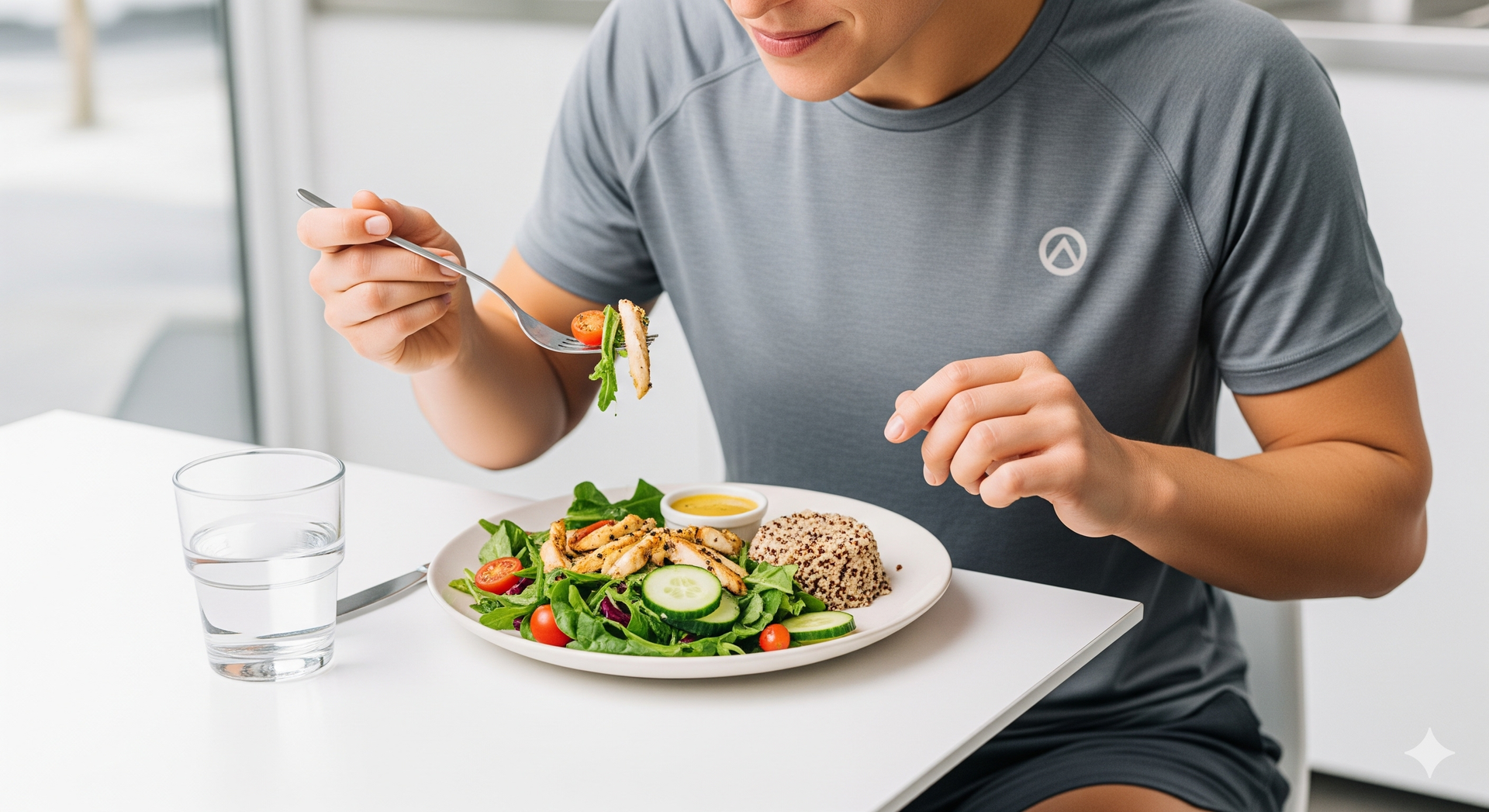How to Start Powerlifting Safely and Build a Strong Foundation
Starting powerlifting safely means nailing your technique first—you don’t wanna lift heavy if your form’s shaky, right?
Focus on learning the basics, warming up well, and moving gradually with your weights to dodge injuries. Set clear goals, stick to a smart training plan, and don’t skip rest days—they’re as important as those squats. Hydrate, stretch, and listen to your body.
Keep this up, and you’ll be building a solid strength base that won’t let you down. There’s plenty more to uncover as you go!
Key Takeaways
- Prioritize learning proper technique through coaching and form drills to ensure safe and effective strength development.
- Start with gradual load progression and structured training cycles to avoid injury and build a solid strength base.
- Incorporate dynamic warm-ups and mobility exercises before lifting to reduce injury risk and improve movement efficiency.
- Set clear, realistic goals and track progress to maintain motivation and guide training direction.
- Emphasize recovery strategies like active recovery, quality sleep, and stress management to support muscle growth and prevent burnout.
Understanding the Basics of Powerlifting
If you’re new to powerlifting, getting the basics down first is a smart move.
Powerlifting’s history is pretty cool—it started as a way to test pure strength with just three main lifts: squat, bench press, and deadlift. Think of it as the original strength training challenge, where lifters compete to lift the heaviest weights possible.
You’ll find that powerlifting isn’t just about brute force; it’s about consistency and building solid muscle over time. Joining this community means you’re stepping into a long-standing tradition of strength and support.
As you begin, focus on understanding these core lifts and how they work together to boost your overall power. Remember, everyone starts somewhere, and this sport welcomes you with open arms.
Prioritizing Proper Technique and Form
Now that you know the basics of powerlifting, it’s time to talk about how you actually lift—doing it right matters more than just trying to move heavy weights.
You want to build strength safely, and that means prioritizing proper technique and form every single time. Skipping this step is like trying to build a house on shaky ground—it just won’t hold up.
Start by focusing on simple technique drills to nail down the right movements. These drills help your body learn the correct patterns so you don’t develop bad habits.
Also, regular form assessments are your best friend here. They let you catch little mistakes before they turn into injuries. Don’t shy away from asking a coach or training buddy to watch your lifts—they’ll spot things you might miss.
Creating a Structured Training Plan
You’ll want to set clear goals so your training actually takes you somewhere, not just to the gym and back.
Finding the right balance between how much you lift and how often you train is key to making steady progress without burning out.
Think of it like cooking—too much spice or too little can mess up the whole dish, and your training is no different!
Setting Clear Goals
Even though jumping into powerlifting can feel exciting, setting clear goals first makes all the difference in staying safe and making progress.
Think of goal setting like your workout GPS—it helps you know where you’re headed and keeps you on track. Without clear goals, it’s easy to get lost or push too hard too soon, which nobody wants.
Start by choosing realistic targets, like improving your squat form or hitting a certain weight. Use performance metrics, such as reps, sets, or weight lifted, to measure how you’re doing.
Tracking these little wins not only boosts your confidence but also connects you with others on the same journey.
Balancing Volume and Intensity
While it might seem tempting to lift heavy every day, balancing how much you do (volume) and how hard you push yourself (intensity) is key to making steady progress without burning out.
Think of volume manipulation as adjusting the total workload—like sets and reps—while intensity variation changes how heavy the weights feel that day. Mixing these up keeps your body guessing and growing stronger, plus it helps you avoid feeling drained.
You’re not alone on this journey; everyone in the powerlifting community knows that dialing in this balance builds a solid foundation.
Focusing on Gradual Progression and Load Management
Since powerlifting puts a lot of stress on your muscles and joints, it’s smart to take things slow and steady. You don’t want to rush into heavy lifts too fast—that’s a quick way to burn out or get hurt.
Instead, focus on gradual load progression. This means slowly increasing the weight you lift over time, giving your body a chance to adapt and get stronger without freak-outs. Think of it like leveling up in a game, but with your muscles.
Using well-planned training cycles helps you manage this load progression. These cycles break your training into phases, mixing lighter and heavier days so you recover well and stay motivated.
You’re not alone here; lots of lifters swear by managing their loads carefully. Stick with this approach, and you’ll build a solid foundation that lasts.
Importance of Warm-Up and Mobility Exercises
Before you jump under the bar, warming up with dynamic stretches and joint mobility drills gets your body ready to move smoothly and safely.
These exercises help wake up your muscles and joints, so you’re less likely to pull something embarrassing.
Plus, a little pre-lift activation can boost your power and focus, making those heavy lifts feel a bit friendlier.
Dynamic Stretches Benefits
Even if you’re itching to lift heavy, jumping in without warming up is like trying to drive a car on a cold morning without letting the engine run first—it just doesn’t work well.
Dynamic stretching techniques get your muscles ready by gently moving them through their full range. This wakes up your body and sets you up for improved performance. Plus, it helps prevent injuries, which keeps you in the game longer.
Try adding these dynamic stretches before your session:
- Leg swings to loosen hips
- Arm circles to wake shoulders
- Walking lunges to activate legs
- Torso twists to engage your core
Doing this not only boosts strength but also makes you feel connected to your body, like part of a team that’s ready to crush the workout safely.
Joint Mobility Drills
Warming up with dynamic stretches gets your muscles buzzing, but your joints need some love too.
Joint mobility drills are your secret weapon to avoid stiffness and keep you moving smoothly. Focus on hip mobility and ankle flexibility—these help you squat and deadlift without feeling like a rusty robot.
Don’t forget shoulder stability and thoracic rotation, which are key for safe pressing and keeping your posture in check. Wrist strength matters too; after all, your wrists take a beating during lifts.
Try hip flexor stretches and foam rolling to loosen tight spots and prep your body. These dynamic warm ups aren’t just routine—they’re your way to join the powerlifting family fully ready, confident, and injury-free.
Let’s get those joints happy!
Pre-Lift Activation Techniques
Three quick moves can totally change how your lifts feel and perform.
Before you even touch the bar, spending a few minutes on pre-lift activation techniques wakes up your muscles and sharpens your focus. These activation drills boost muscle engagement, making sure your body’s ready to handle the load without risking injury.
Think of it like revving a car engine before a race — you want everything firing smoothly. Here’s what you can try:
- Glute bridges to wake up your hips
- Scapular push-ups for upper back activation
- Bodyweight squats to prep your legs
- Band pull-aparts to engage your shoulders
Doing these will help you feel stronger, move better, and join the powerlifting family with confidence.
Give your warm-up some love; your future self will thank you!
Nutrition and Hydration for Strength Gains
Since powerlifting pushes your muscles hard, what you eat and drink plays a huge role in how well you perform and recover. Getting your macronutrient balance right—carbs, proteins, and fats—is key. Carbs fuel your workouts, protein helps repair and build muscle, and fats keep your energy steady.
Think of it like assembling a powerlifting puzzle: every piece counts. Don’t stress about being perfect, but aim for a good mix that suits your body and goals.
Hydration strategies matter just as much. Drinking water before, during, and after your sessions keeps your muscles firing and helps prevent cramps. If you’re sweating buckets, adding an electrolyte drink can be a game-changer.
Incorporating Rest and Recovery Strategies
Even if you love hitting the weights hard, your muscles need a break to grow stronger and avoid burnout.
Rest and recovery aren’t just downtime—they’re part of your powerlifting success. When you take care of your body between sessions, you’ll feel better, lift smarter, and stick with your routine longer.
Here’s how to make rest work for you:
- Use active recovery days—light walking or stretching to keep blood flowing without stress.
- Prioritize sleep optimization by creating a cool, dark room and keeping a consistent bedtime.
- Manage stress with deep breathing or meditation; stress zaps your strength gains.
- Roll out sore spots using foam rolling to ease tight muscles and boost flexibility.
Frequently Asked Questions
What Type of Shoes Are Best for Powerlifting?
You’ll want lifting footwear with a firm sole and proper heel height to improve stability and power during lifts. Choosing the right shoes helps you feel confident and connected with the powerlifting community as you progress.
Can Powerlifting Help With Weight Loss?
Powerlifting benefits your weight loss strategies by boosting metabolism and building muscle, helping you burn more calories even at rest. When you join this supportive community, you’ll feel motivated and connected on your fitness journey.
What Supplements Are Safe for Beginners?
Imagine your body as a garden—protein powder and creatine monohydrate are the trusted tools you’ll use to nurture growth safely. Start with these, and you’ll join a community committed to strength and support.
How Do I Find a Qualified Powerlifting Coach?
When finding coaches, you should assess qualifications by checking certifications, experience, and client reviews. Don’t hesitate to ask for trial sessions—it helps you connect and guarantees the coach truly supports your powerlifting journey.
Final Thoughts
Starting powerlifting is like planting a seed—you’ve got to nurture your form, feed your body right, and give yourself time to grow strong. Take it step by step, don’t rush the weights, and listen to your body like it’s your best workout buddy.
With a solid plan, proper rest, and a splash of patience, you’ll build a foundation that’s tough as nails. Remember, even champions started with baby weights and big dreams!
Ready to lift weights like a pro? Check out our power lifting program. Our trained coaches will be there with you every step of the way until you reach your goal. Contact us today for more details.



